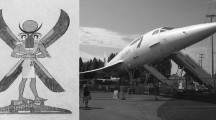Abstract
A major concern in designing tribosystems is to minimize friction, save energy, and to reduce wear. Conventional philosophy for design centers on mechanical and material considerations. In particular, designers pay more attention to material properties and material choices based on mechanical properties rather than the design and shape of the contacting surfaces and the relation of that surface to the function of the device. As a result of thriving for miniaturization, focus has shifted toward optimal surface design (that is to construct a surface that is an integral part of the function of the tribosystem). Inspirations for such a trend come from studying natural systems and mimicking natural design rules. The major attraction is that natural systems, while functionally complex, are, in general, of optimized shape and performance. It is further believed that functional complexity of natural systems is what affords natural species to morph continuously to adapt with the operating environment. One bio-species that is of interest is the Ball Python. This is because such a species continuously slides against various surfaces, many of which are deemed tribologically hostile, without sustaining much damage. Much of the success of that species in adapting to its environment is attributed to surface design features. In that respect, studying these features and how do they contribute to the control of friction and wear is very attractive. This paper is a step in this direction. In this work we apply a multi-scale surface characterization approach to study surface design features of the Python regius. The focus is on those features that are typically used to assess the performance of high quality lubricating surfaces (such as those obtained through plateau honing). To this end, topographical features are studied by SEM and through White Light Interferometry (WLI). We probe the roughness of the surface on multi-scale and as a function of location within the body. In addition we draw a comparison of these features to those of human skin.












Similar content being viewed by others
References
Abdel-Aal, H.A.: Complexity, synergy and emergence in tribosystems. Int. J. Mat. Prod. Tech. 38(1), 1–3 (2010)
Tong, J., Wang, H., Ma, Y., Ren, L.: Two-body abrasive wear of the outside shell surfaces of mollusc Lamprotula fibrosa Heude, Rapana venosa Valenciennes and Dosinia anus Philippi. Tribol. Lett. 19, 331–338 (2005)
Adam B. Safer, Michael S. Grace: Infrared imaging in vipers: differential responses of crotaline and viperine snakes to paired thermal targets. Behav. Brain Res. 154(1), 55–61 (2004)
Johnna B. Roberts, Harvey B. Lillywhite: Lipids and the permeability of epidermis from snake. J. Exp. Zool. 228, 1–9 (2005)
Jayne, B.C.: Mechanical behavior of snake skin. J. Zool. 214, 125–140 (1988)
Rivera, G., Savitzky, A.H., Hinkley, J.A.: Mechanical properties of the integument of the common gartersnake, Thamnophis sirtalis (Serpentes: Colubridae). J. Exp. Biol. 208, 2913–2922 (2005)
Hazel, J., Stone, M., Grace, M.S., Tsukruk, V.V.: Nanoscale design of snake skin for reptation locomotion via friction anisotropy. J. Biomech. 32, 477–484 (1999)
Sepkoski, J.: A compendium of fossil marine animal genera (Reptilia entry). Bull. Am. Paleontol. 364, 560 (2002)
Ball, P.: The Self-Made Tapestry: Pattern Formation in Nature. Oxford University Press, New York (2001)
Varenberg, M., Gorb, S.N.: Hexagonal surface micropattern for dry and wet friction. Adv. Mater. 21, 483–486 (2009)
Zhang, H., Dai, Z., Yang, S.: Structure and friction characteristics of snake abdomen. J. Nanjing Univ. Aeronaut. Astronaut. 40, 360–363 (2008)
Price, R.M.: Microdermatoglyphics: an appeal for standardization of methodology and terminology with comments on recent studies of North American natricines. J. Herpetol. 24, 324–325 (1990)
Ruibal, R.: The ultrastructure of the surface of lizard scales. Copeia 4, 698–703 (1968)
Price, R.M., Kelly, P.: Microdermatoglyphics: basal patterns and transition zones. J. Herpetol. 23, 244–261 (1989)
Chiasson, R.B., Bentley, D.L., Lowe, C.H.: Scale morphology in Agkistrodon and closely related crotaline genera. Herpetologica 45, 430–438 (1989)
Gower, D.J.: Scale micro-ornamentation of uropeltid snakes. J. Morphol. 258, 249–268 (2003)
Acknowledgments
The authors acknowledge Mr. Benjamin Favre for assistance in SEM imaging and Mrs Ruth Ann Jones of Troup county GA School System, for donating the shed skin used in this work.
Author information
Authors and Affiliations
Corresponding author
Rights and permissions
About this article
Cite this article
Abdel-Aal, H.A., El Mansori, M. & Mezghani, S. Multi-Scale Investigation of Surface Topography of Ball Python (Python regius) Shed Skin in Comparison to Human Skin. Tribol Lett 37, 517–527 (2010). https://doi.org/10.1007/s11249-009-9547-y
Received:
Accepted:
Published:
Issue Date:
DOI: https://doi.org/10.1007/s11249-009-9547-y




